“I seek to work with matter that alters with each intervention, a bit as if in a body-contact scuffle.”
Sandra Crisp LG: In your practice, you mention ‘using any medium most relevant to the work’. ‘Sentinels’ is an ongoing series of large-scale drawings featuring female creatures created using graphite, pastel & charcoal on Mulberry paper. ‘Enmeshed’ 2012—2018 on Heritage paper are also works that are highly detailed and delicately tonal.
The floor-based installation ‘Smithereens’ uses a variety of unusual media from pencil shavings, studio floor detritus to torn paper curled into loose spiral forms. Whilst ‘Lineage/ Toy Boxes’ are sculptural assemblages formed of wood and metal objects.
Another installation entitled ‘Lineage/ Chrysalises’ presents 48 toddler’s clothes coated in resin, appearing as if suspended in time; Bandaged matchsticks comprise another project.
It would be great to learn in more detail about the diversity of materials or techniques that you use.
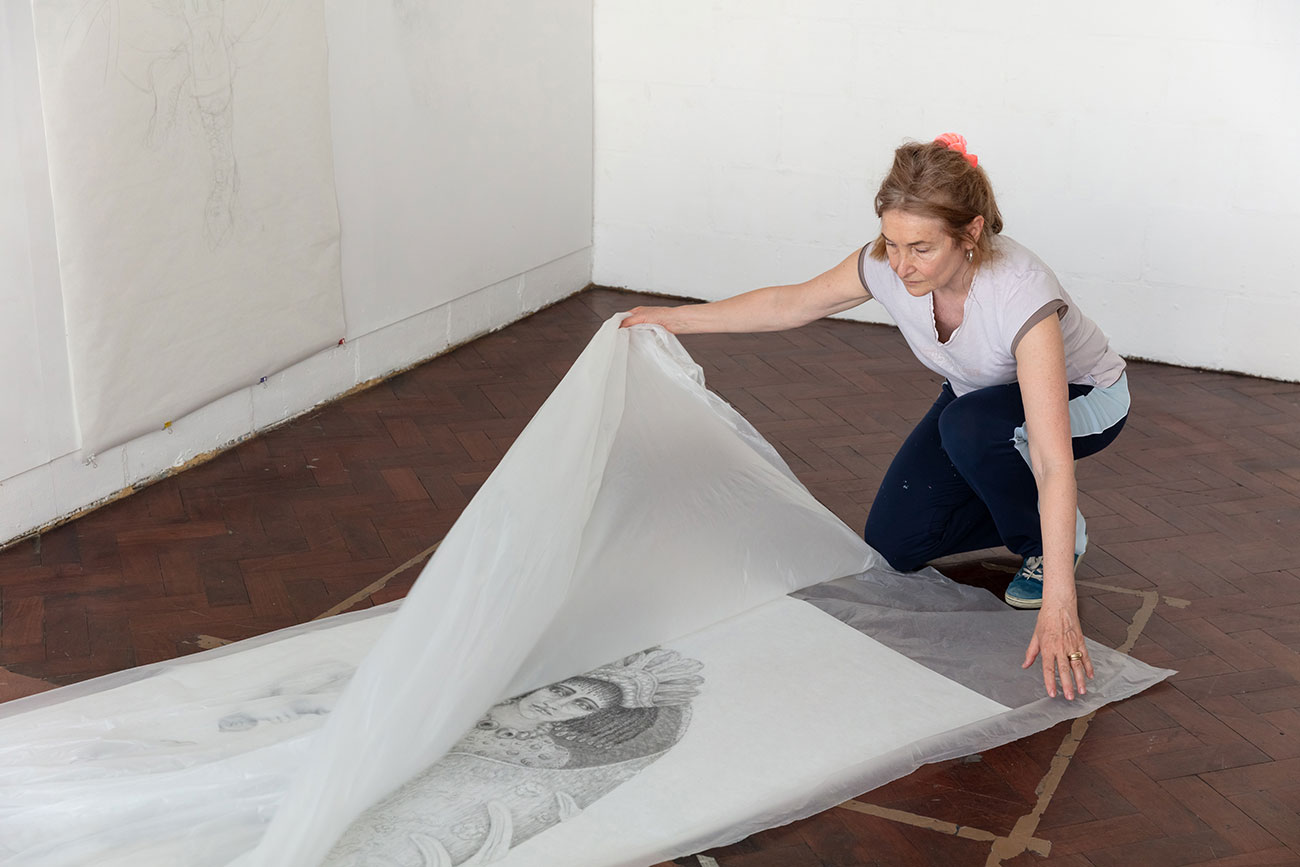
In my studio, there have always been several works on the go at any one time, often in distinct media; currently, I am working on two large drawings, a wooden construction and an artist’s book. Articulating these different visual languages is similar, I feel, to living in an English-speaking country while my mother tongue is French, my husband is German and I am learning Italian: the sounds are dissimilar but what I want to say stays the same. Occasionally, I use a timer to rotate between the on-going works. However, I also see moments of not-knowing-how-to-proceed as pivotal pauses for resourcing before bouncing back.
While distinct media offer visual diversity, my working process tracks the same trajectory: collecting source materials; drawing extensively; picking the best suitable medium; prioritising responsive materials; scaling up; working in series; presenting the work as installation rather than permanently placed and I will expand some of these points below. All in all, the work acknowledges an already existing form, narrative or sentiment and transforms it into something new, asserting thereby our capacity for change.
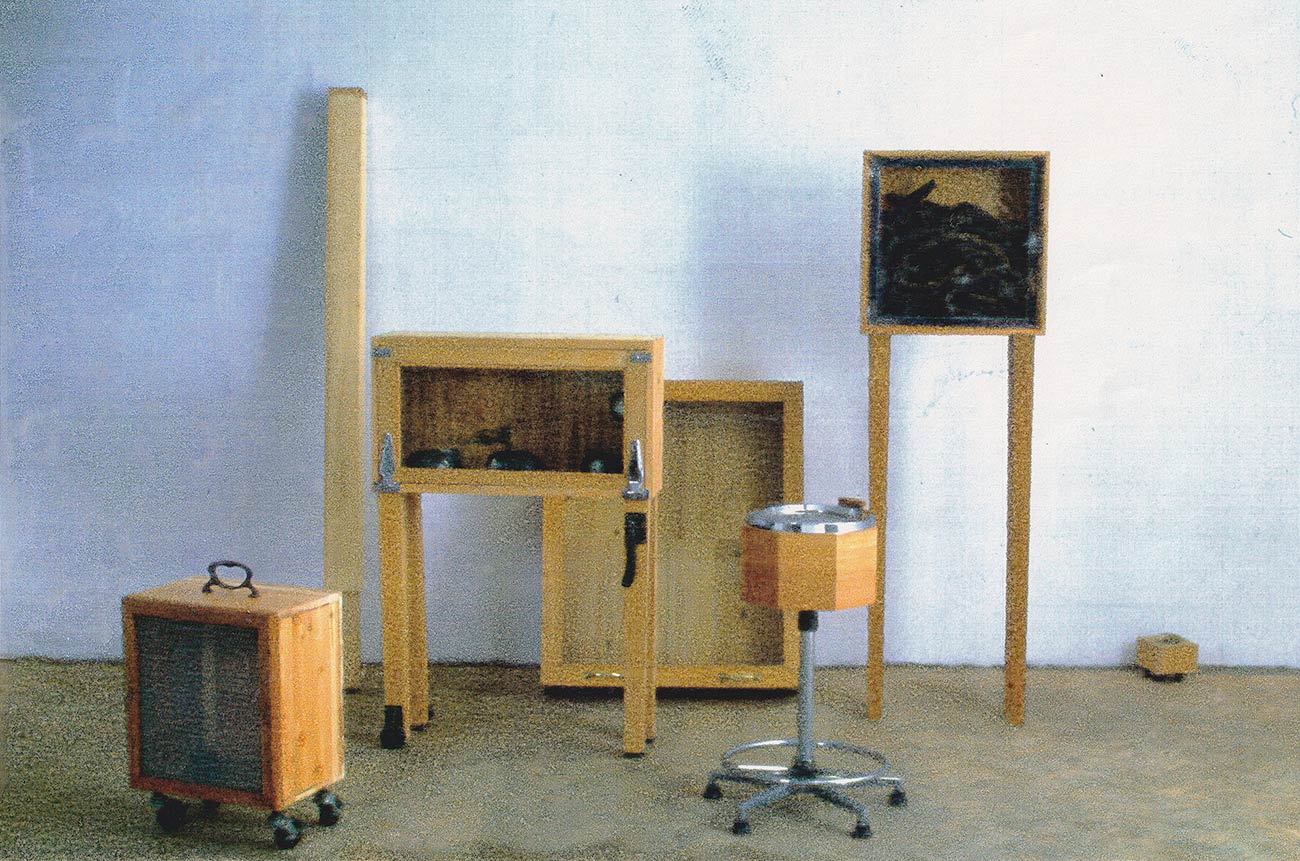
As a sculpture student, I was avidly collecting from London skips as in ‘Family Photo’, an installation of seven legged boxes built after recycling rejected wood and stuff. This later extended to looking into attics: the video clip shows ‘Alphabet Cubes’, a hanging mobile that started from vintage wooden alphabet blocks and ‘Blond Vénitien’ that stages six pieces of hair from cross-generational women of the same family. Second-hand shops supplied children’s clothes for ‘Chrysalises’, an installation incorporating forty-eight items.
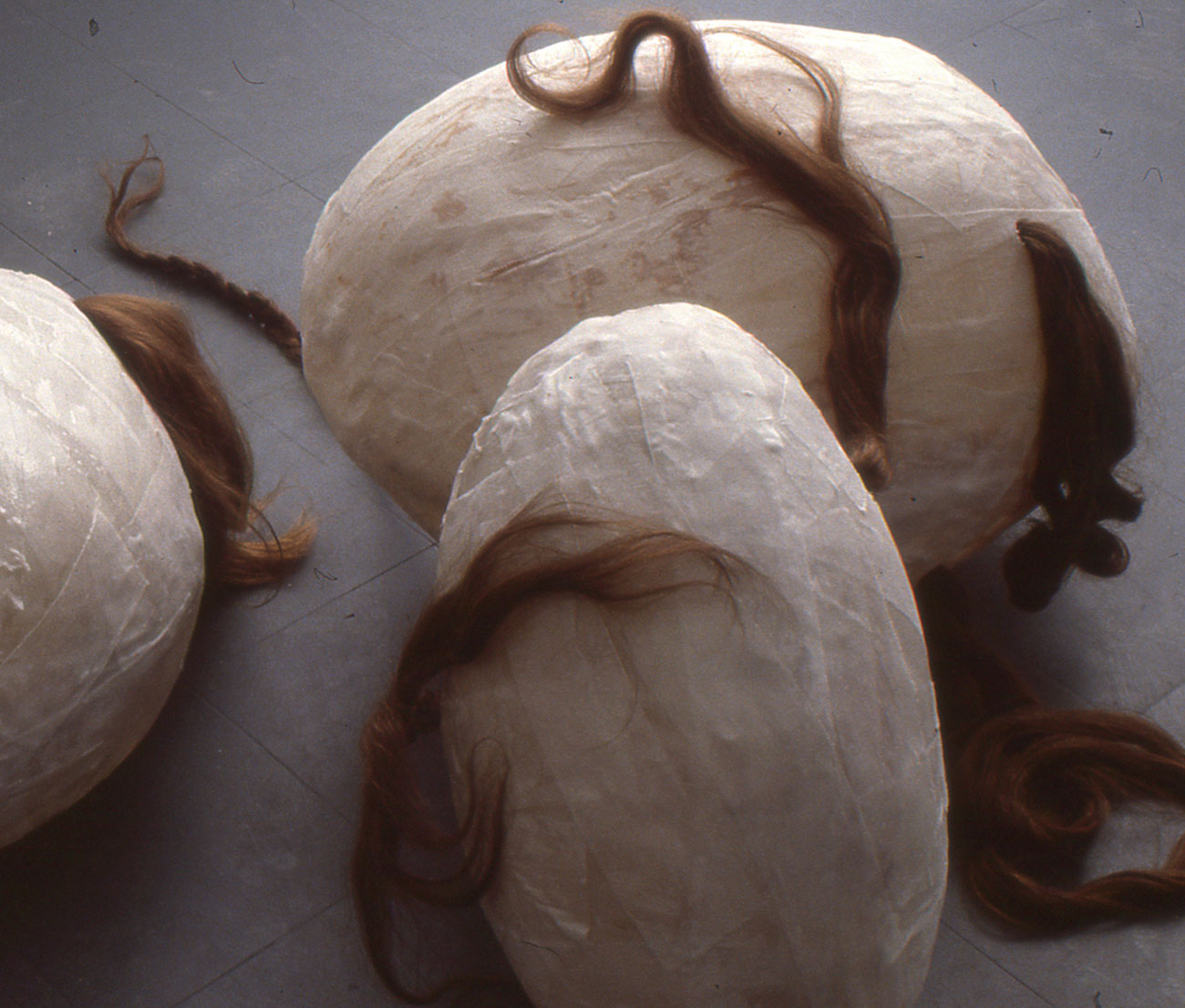
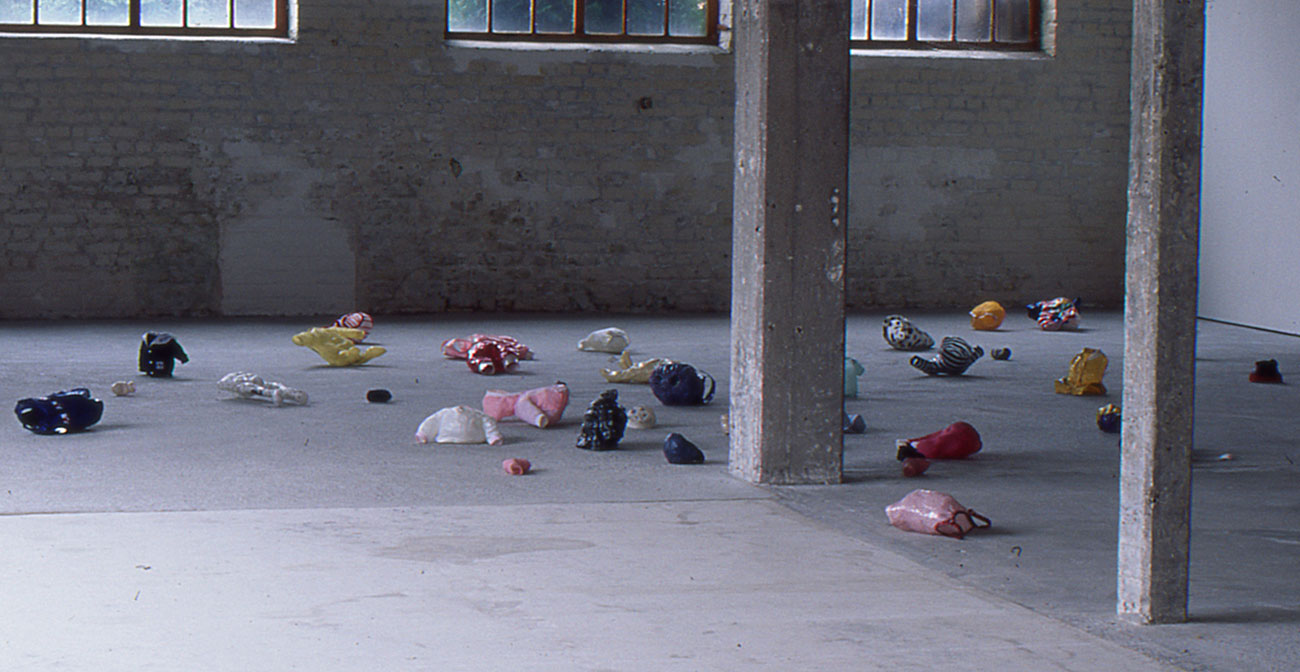
In the past years, drawing has become a constant activity and I always carry a sketchbook for gathering source material. I draw a lot in museums. Drawing offers endless options, it is liberating. I use it for memorising what I see, modify at my whim or copy to study the artefact. I map out and extract what is of interest to me. Or let my pencil flow for the intense pleasure of connecting with a fellow artist’s creativity. Sometimes I attack by using an entirely different medium, unsuitable to convey the original work (for example, using a heavily charged brush with dark ink to draw something as delicate as a spider web). Headphones are necessary to isolate myself from the surrounding hubbub. These small drawings are the start point for the series ‘Sentinels’ as they are assembled and scaled up to large drawings on Japanese paper of over life-size female warriors (See slide show below).
My collections cover personal stories as in ‘Je Dois Dormir’, the tragedy of a 35-year-old mother who was blamed for her own murder on 14th December 1914 for having been ‘difficult’. It is not unlikely that she was suffering from post-natal depression or mental illness as notes by her hand were found stating ‘I must sleep’ with each day’s date over months. This installation aims to un-shame her memory.
‘Je Dois Dormir’ video, 2019. Vintage bedsheet with embroidery, acrylic, pegs, washing line. Installation view – ‘Coming Good: Come Hell or High Water’ exhibition in St John’s Churchyard, London. Overall dimensions 3.50m x 2.70m
Another source material are the diffuse, yet powerful, impulses and responses that come up from within oneself. The word ‘emotion’ undermines these experiences that have an intelligence to them and are the manifestation of movement in our unconscious. The artwork that ensues entices the unfathomable out in the open to get a good look at what is going on. For example, discovering the old wooden alphabet blocks abandoned in the attic of my (then) family home in France prompted shaky feelings about lost childhood, the difficulties of growing up, mourning for my parents and the displacement caused when adopting the UK. The installation ‘Alphabet Cubes’ is by contrast playful as it reminds us that reading is fun and full of possibilities: HOPE in the HERE-and-now, and LEAP into LIFE.
I do, however, not see my work as autobiographical but framed within universal references.
‘Alphabet Cubes’ video, 2021. Wood, acrylic paint, rope. Installation view – ‘Coming Up For Air’ exhibition in St John’s Churchyard, London Overall dimensions 3m x 0.8m x 0.8m
In terms of artist’s materials, I seek to work with matter that alters with each intervention, a bit as if in a body-contact scuffle. And so, my paper of choice for the Sentinels series is a 50 msg tissue paper that requires far more attention in its handling and when drawing than a 600 gsm smooth paper would. Erasing a mark scars the paper surface, pigment gets trapped in the paper fibres while a breeze inside the studio lifts and creases the paper scroll for good.
Small preparatory drawings act as guides but the marks must still be translated from the moleskine sketchbook paper to tissue paper, and reinvented in the transcription from small to very large. This, I do directly on the final large tissue paper and develop as I go, i.e. more wrestling. Laying bare imperfections on the work surface is important to me.
Finally, time is part of my work’s ethos, its making and narrative. The installation ‘Towers’ starts with shredding documents relating to three years of privately renting studio spaces in East London, a period saturated with anxiety brought on by the greedy unreliable landlord. These are then made into papier-mâché towers, exposing cracks or grooves as much as strength and solidity. ‘Sentinels’ drawings stay several months on the studio wall as they need slow and patient reworking. There is a ghost-like quality to these figures as they break through to the surface of the paper as if passing from an invisible state of being to another, while appearing briefly in this moment (the emphasis being ‘now’ and seizing the moment).
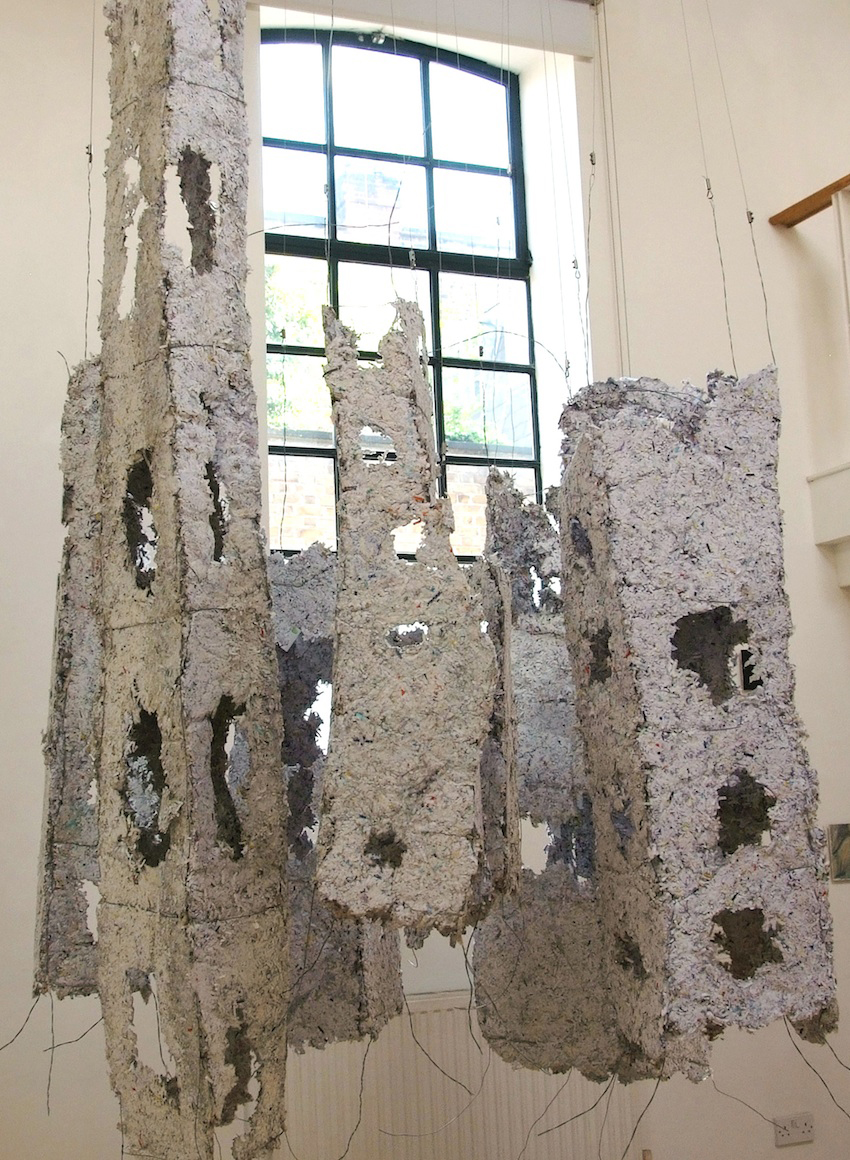
The more I am writing about my working process, the more I recognise its complexity. Part of making work is akin to an act of faith: despite not fully knowing each single step leading to a finished piece, a certainty underpins the momentum and leads forward.
.
Aude Hérail Jäger LG, 2022
audeherailjager.com
Current Exhibitions
The London Group Winter Exhibition (ONLINE)
A Question of Process
#13 Stephen Carley
#14 Beverley Duckworth









